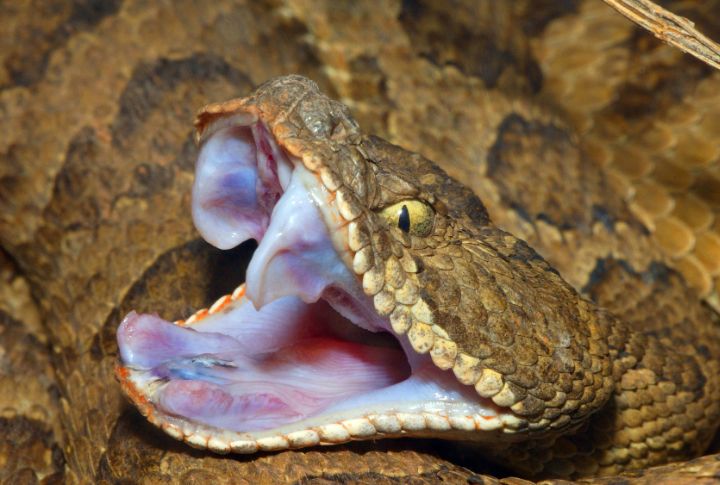
Rattlesnakes! Just the name sends shivers down some spines. But these slithering sentinels of the wild are more than just beings of scary movies and dusty legends. They’re a vital part of healthy ecosystems across the United States and come in various shapes, sizes, and colors. This article presents the different rattlesnake species that call the USA home.
Eastern Diamondback Rattlesnake
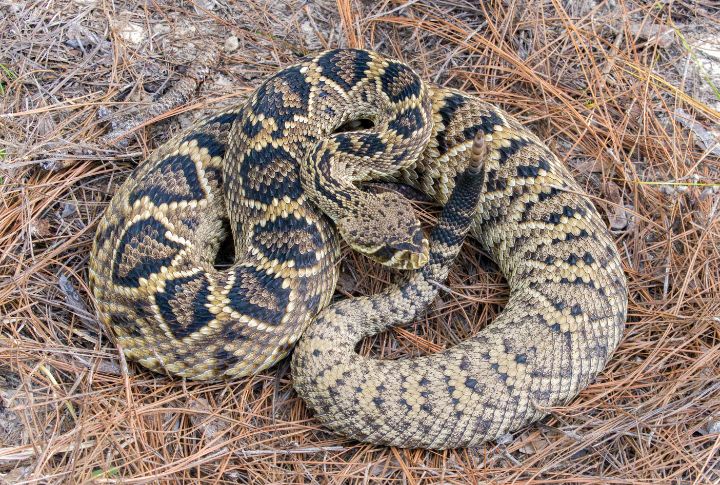
The undisputed king of rattlesnakes, the Eastern Diamondback dominates the southeastern US region. Its massive physique, exceeding eight feet in length, and diamond-shaped markings make it instantly recognizable. This apex predator lurks in pine forests, swamps, and coastal plains, ambushing prey with its potent venom.
Western Diamondback Rattlesnake
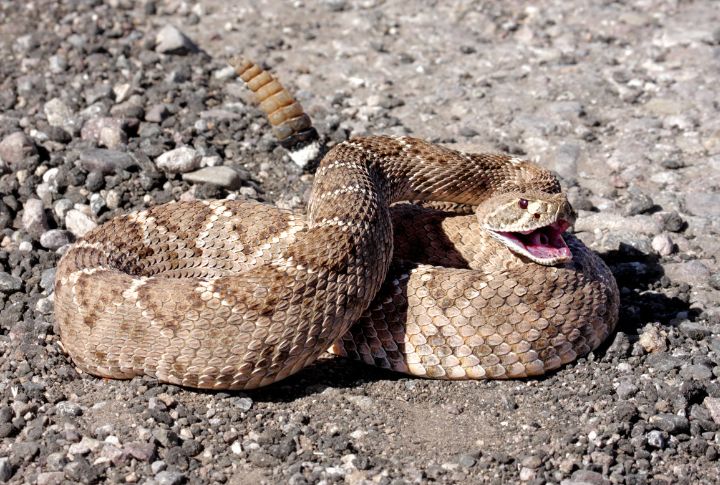
Referred to as the “coon tail” rattlesnake, it earns this nickname from its distinct tail pattern resembling a raccoon’s tail that is characterized by black and white banding. Utilizing a hemotoxic venom, this snake reserves its potency for necessary occasions. It adopts a defensive stance and issues warnings with its rattles before striking. Most active during hours when the temperature is lower, the Western Diamondback preys on small mammals, birds, lizards, and other snakes.
Timber Rattlesnake
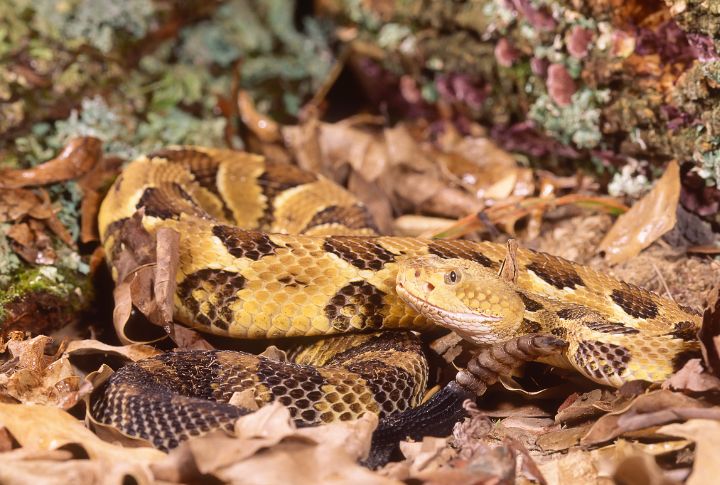
Haunting the deciduous forests of eastern North America, it is a master of camouflage. Its body is patterned, having dark brown or black chevrons outlined in light yellow, allowing it to blend seamlessly with fallen leaves and forest debris. This medium-sized serpent feeds primarily on small mammals, injecting its venom through long, hollow fangs to subdue its prey.
Mojave Rattlesnake
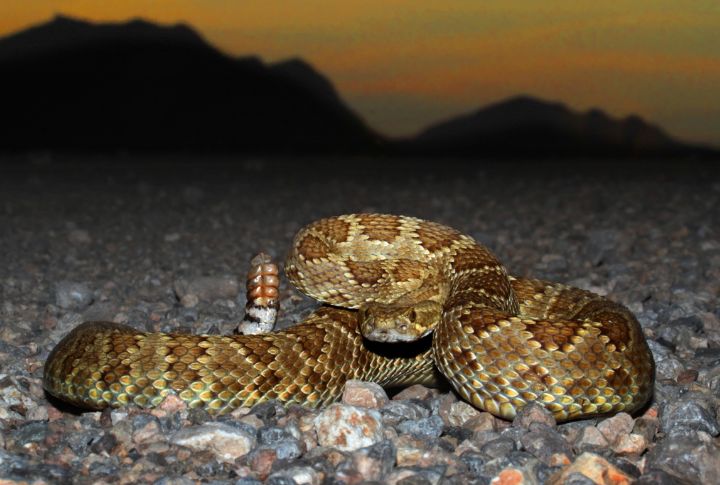
Often mistaken for the western diamondback, this rattler can be distinguished by its tail bands and facial stripes. One can spot two to eight bands of black and white scales on its tail, with the top being black and narrower than the white ones. As a keystone species in desert ecosystems, it regulates prey populations, contributing to the delicate balance of life in arid areas. Mojave Rattlesnake bites deliver potent neurotoxins that can paralyze and potentially kill.
Prairie Rattlesnake
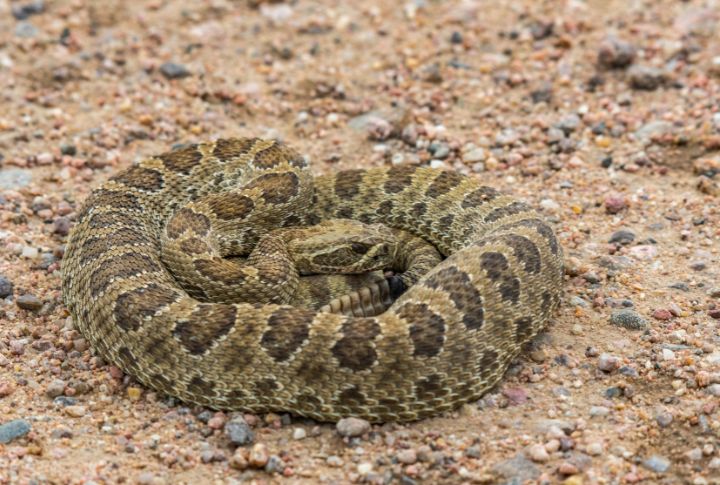
Personifying the spirit of the Great Plains, the Prairie Rattlesnake is a widespread inhabitant of grasslands and prairies across central North America. Attired in a coat of brown or tan blotches, it utilizes its excellent camouflage to ambush unsuspecting prey. This crawling creature possesses a diverse diet, consuming rodents, lizards, and even insects, making it a vital component of the prairie ecosystem.
Pigmy Rattlesnake

Living up to its diminutive stature, the Pigmy Rattlesnake is the smallest rattlesnake species in the United States, rarely exceeding 24 inches. Its venom packs a punch despite its size, effectively subduing small mammals and lizards. This adaptable rattlesnake thrives in several habitats, including pine forests, rocky woodlands, and even coastal dunes.
Eastern Massasauga Rattlesnake
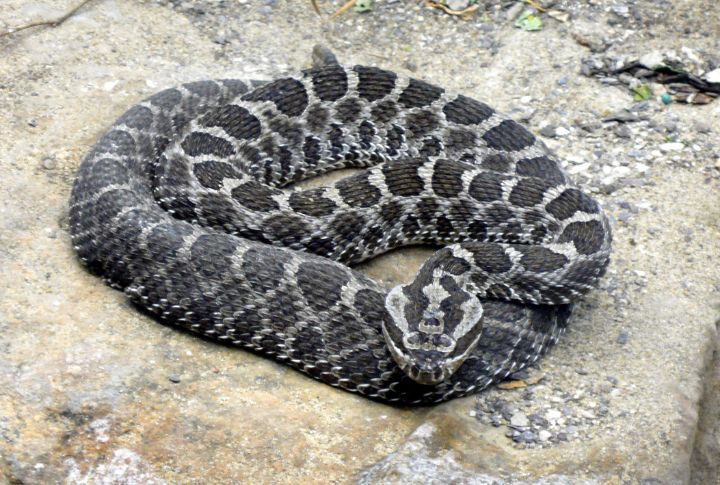
Heralded as the only rattlesnake species found in the Great Lakes region, Eastern Massasaugas inhabit wetlands, marshes, and grassy meadows. The species is declared a threatened variant, and its numbers have declined mainly due to habitat loss, farming, and changes in weather patterns. Interestingly, there’s been one recorded case of the Eastern Massasauga mating with a timber rattlesnake, creating a hybrid.
Speckled Rattlesnake

Living in the rocky mountains of the southwest US, the Spotted Rattlesnake blends in perfectly with its surroundings thanks to its tan or pinkish-brown coat. The snake also has dark shapes scattered across its body, like paint splatters. These “speckles” are more like diamonds, squares, and even hourglass shapes! No two Spotted Rattlesnakes have the same pattern, making them unique like snowflakes.
Black-tailed Rattlesnake
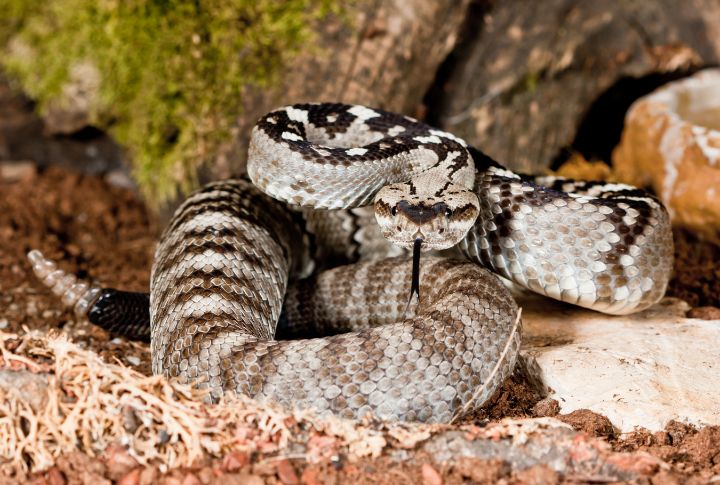
This widespread rattlesnake thrives in diverse habitats, from rocky slopes to woodlands across the southwestern US. Its body coloration varies geographically, ranging from yellow with black bands to a salt-and-pepper pattern. This opportunistic hunter feeds on a variety of small mammals and reptiles.
Sidewinder Rattlesnake
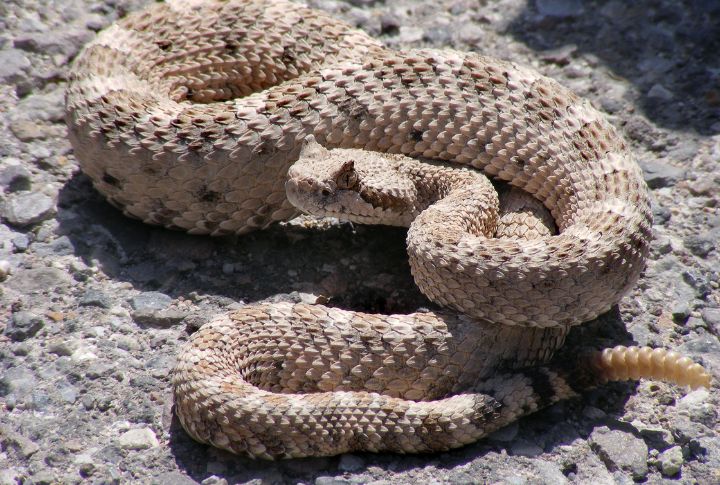
The Sidewinder Rattlesnake is a nocturnal venomous snake species that inhabits the arid land of the southwestern United States. Its distinctive sideways movement, horn-like scales above its eyes, and hidden skin offer adequate concealment in desert environments. Despite its prowess as a predator, which relies on hunting tactics, stealth, and venom, the Sidewinder Rattlesnake opts to evade conflicts, swiftly withdrawing from potential threats.
Red Diamond Rattlesnake
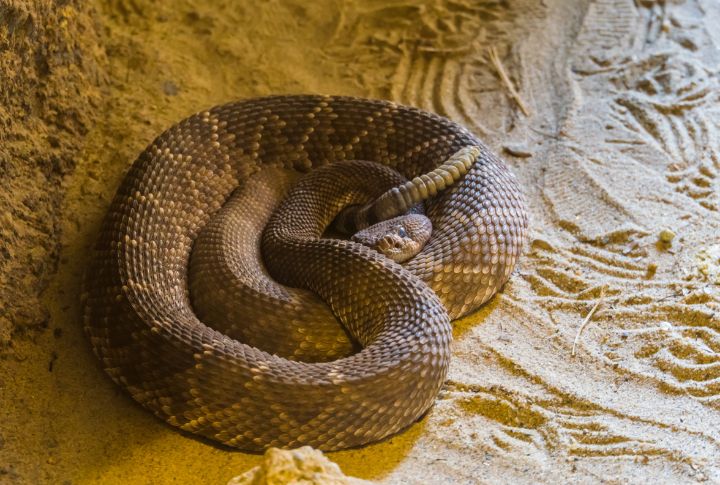
Red Diamond Rattlesnake showcases a distinct reddish-brown or pinkish hue with diamond-shaped patterns adorning its back. Growing up to five feet in length, it flourishes across all habitats, with a preference for open, sandy terrain over rocky terrains. Its diet primarily consists of small mammals, supplemented occasionally with birds, lizards, or other snakes. While predominantly nocturnal, it may seek sun exposure during colder seasons for warmth.
Arizona Black Rattlesnake
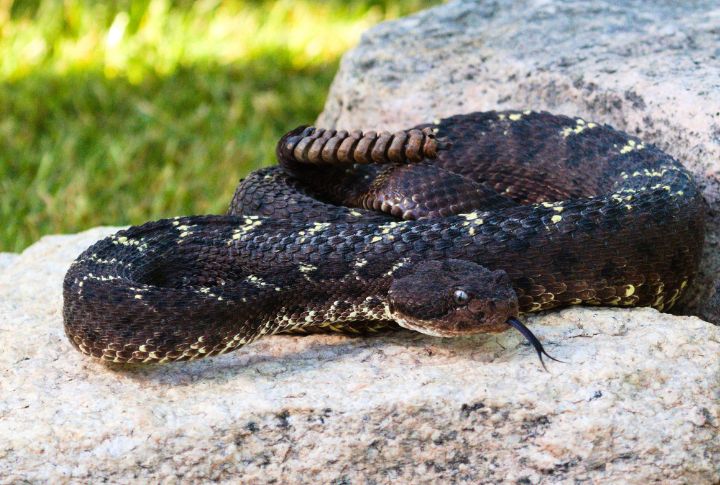
The Arizona black rattlesnake inhabits higher elevations across Arizona and far western New Mexico. Its preference for mountainous habitats and distinctive black coloration as adults set it apart from other western rattlesnakes. Notably, it exhibits a unique behavior known as ‘tail-flagging,’ which serves as a warning signal to potential predators.
Banded Rock Rattlesnake
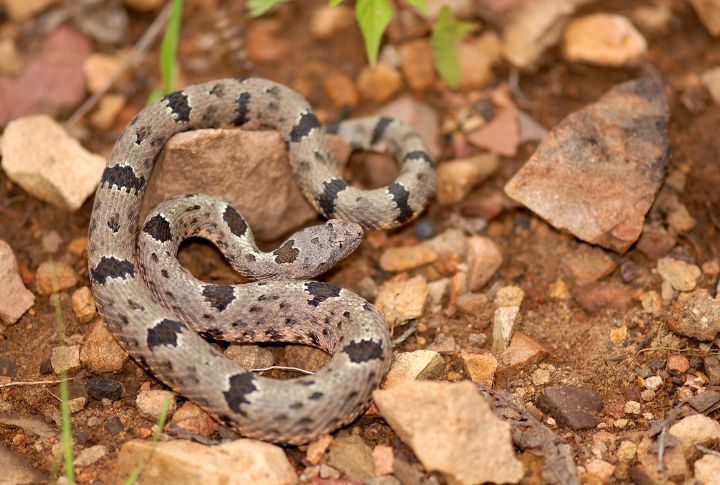
True to its name, it displays a banded pattern with brown or black bands contrasting against a lighter background. It thrives in the country’s southwestern rocky habitats. It gives birth to 2 to 8 offspring at a time and is ovoviviparous, typically delivering young in late summer or early fall.
Tiger Rattlesnake
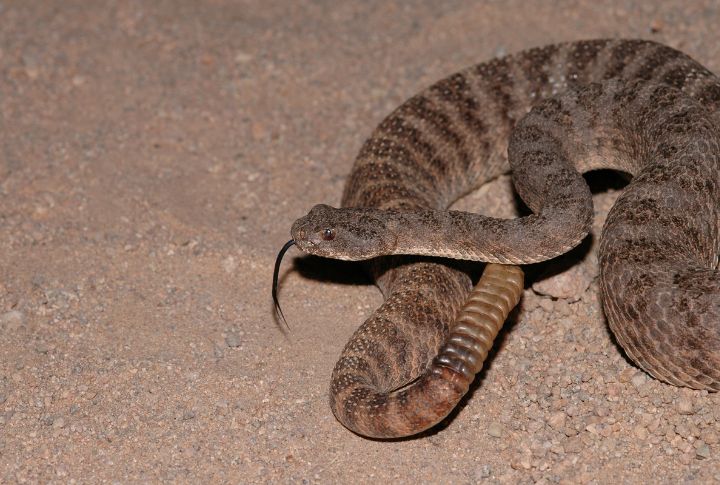
Feared for its potent venom, the Tiger Rattlesnake inhabits rocky slopes, canyons, and woodlands. Its body displays a striking pattern of brown or black bands, often outlined in yellow, resembling a tiger’s stripes.
Twin-spotted Rattlesnake
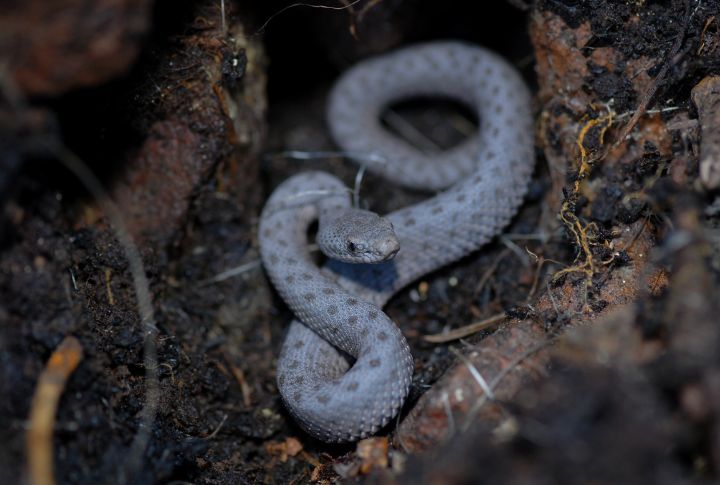
Aptly named, this serpent sports a row of distinctive twin spots running down its back. Endemic to southern regions of California, it prefers rocky slopes and arid forests. Primarily a night creeper, the Twin-spotted Rattlesnake hunts lizards, small mammals, and even scorpions, utilizing its heat-sensing pits to locate prey.
Ridge-nosed Rattlesnake
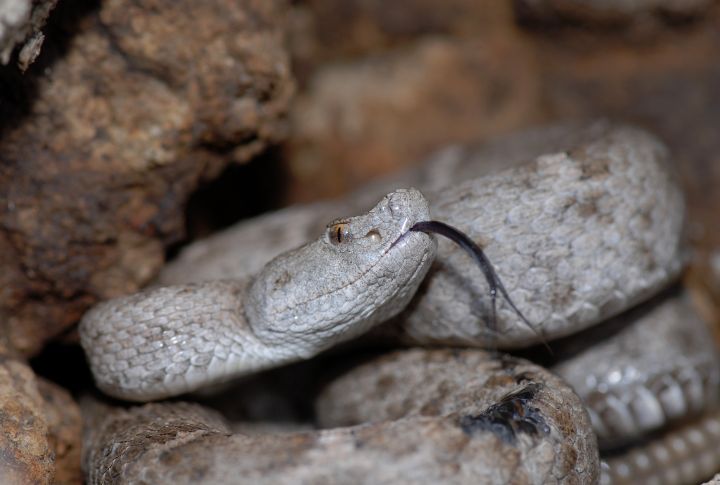
Exclusive to Santa Catalina Island off the coast of southern California, the Ridge-nosed Rattlesnake is a critically endangered species. Its body is adorned with a unique design of brown blotches outlined in white, allowing it to blend in with the rocky island terrain. This medium-sized rattlesnake feeds on lizards, birds, and small mammals, playing a vital role in the island’s ecosystem.
Grand Canyon Rattlesnake
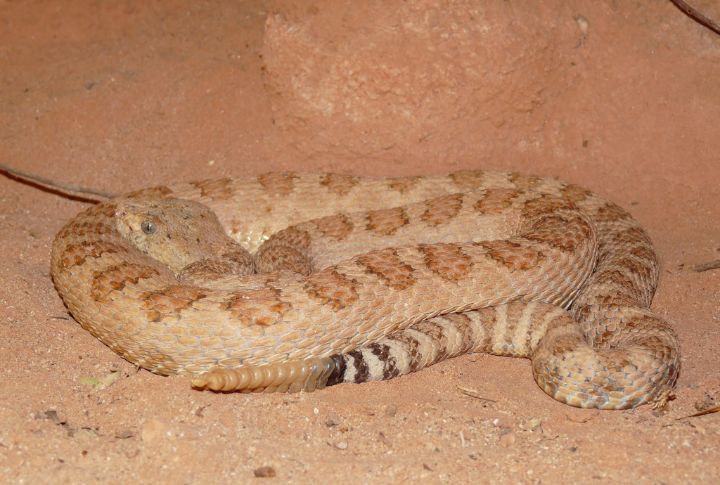
Also known as the Pink Rattlesnake, it is found in Arizona and Utah. Unlike its more vibrantly colored cousins, this snake represents the essence of its rocky home. Its colors, varying from pink to gray, mimic the hues of the surrounding rocks, enabling it to seamlessly blend into the breathtaking view of the Grand Canyon.
Mottled Rock Rattlesnake

They earned their name due to their scales’ mottled or spotted pattern. This medium-sized predator inhabits rocky slopes and canyons and is relatively small in size, usually growing to lengths of around two feet. They have a triangular-shaped head and distinctive heat-sensing pits between their eyes and nostrils.
Pygmy Rattlesnake
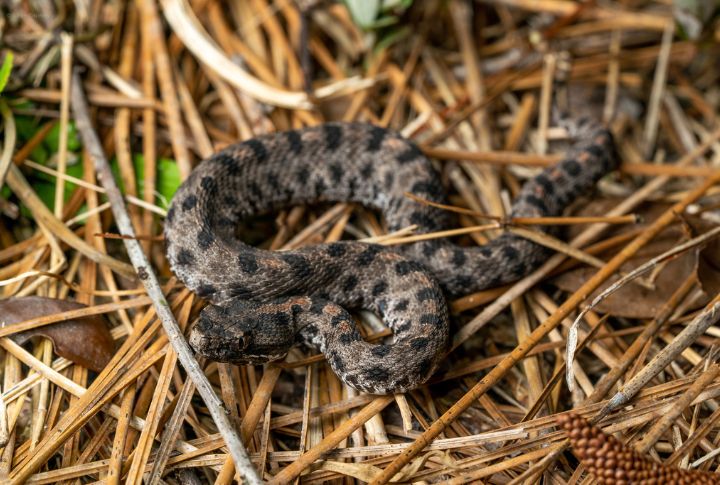
Imagine a rattlesnake so small it could fit in your hand! That’s the Pygmy Rattlesnake, the littlest rattlesnake in America. You’ll find them in pine forests, rocky woodlands, and dunes. Despite its size, rarely exceeding 24 inches in length, the Pygmy Rattlesnake is a fierce hunter.
Great Basin Rattlesnake
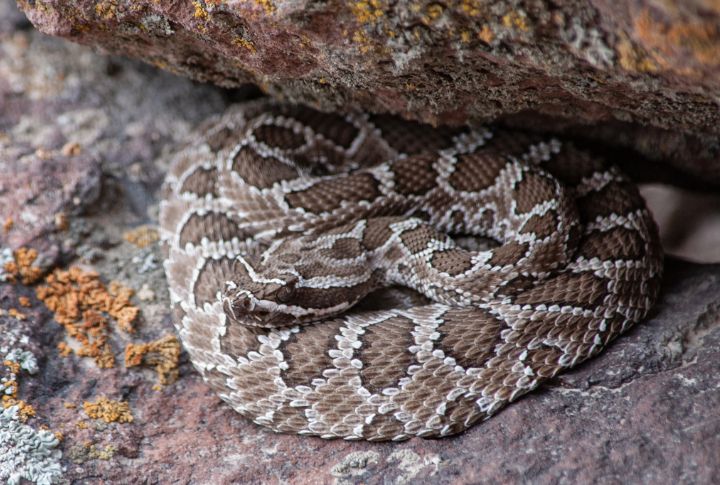
Forget the glamorous Diamondbacks or the terrifying Tiger Rattlesnakes. The Great Basin Rattlesnake is the unsung hero of the arid wilderness. This reptile slithers through the desolate terrains of the Great Basin, a land sculpted by scorching sun and relentless winds. So don’t expect a flashy display of colors here as its coat, muted tones of tans and browns, mirrors the sun-bleached rocks and dusty plains it calls home.

Comments
Loading…